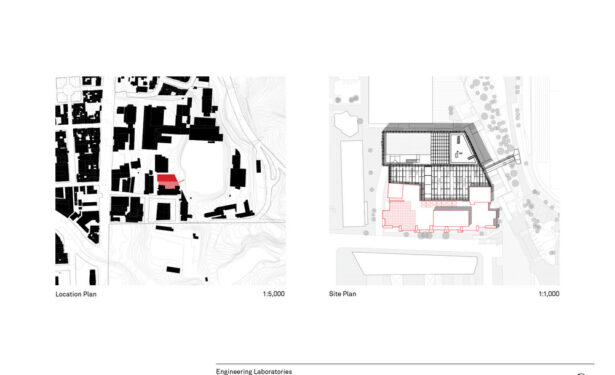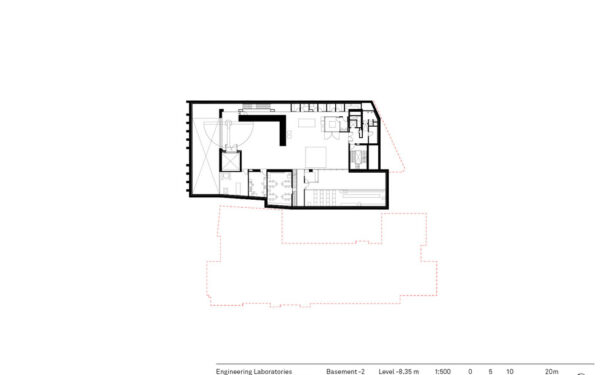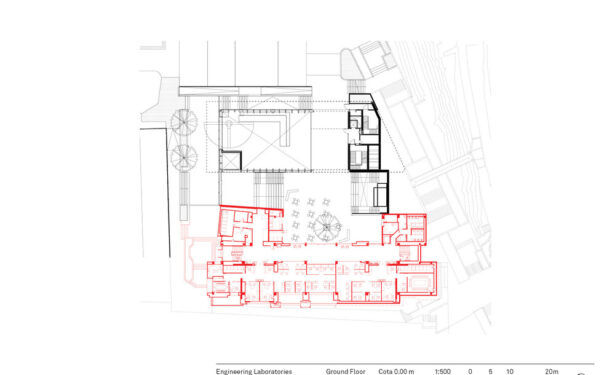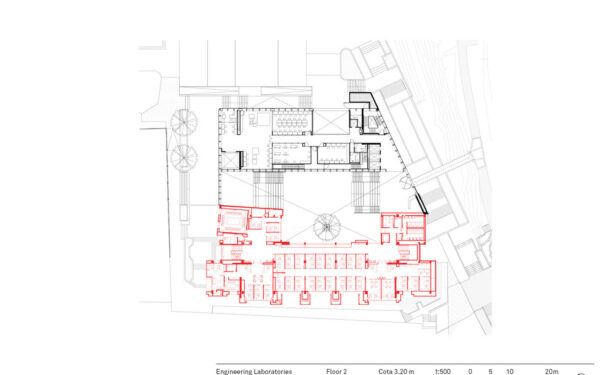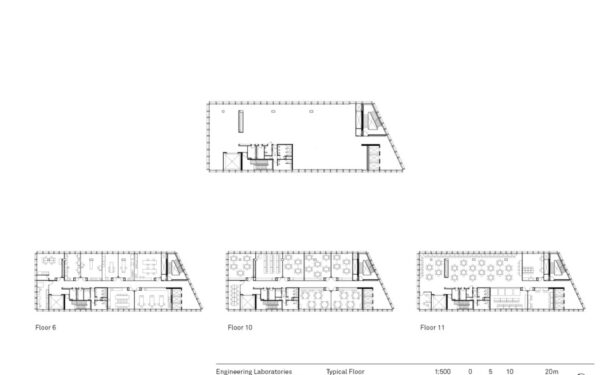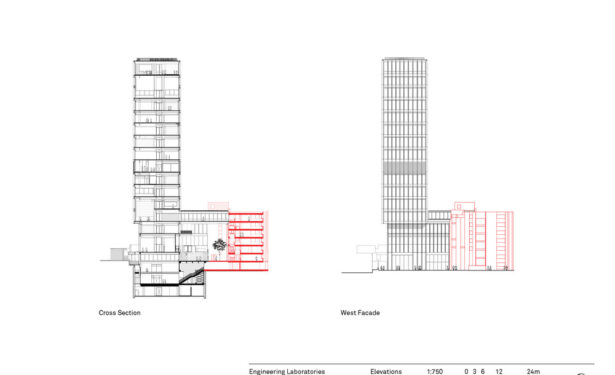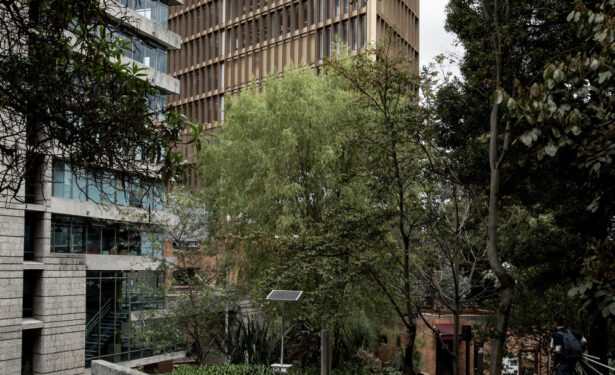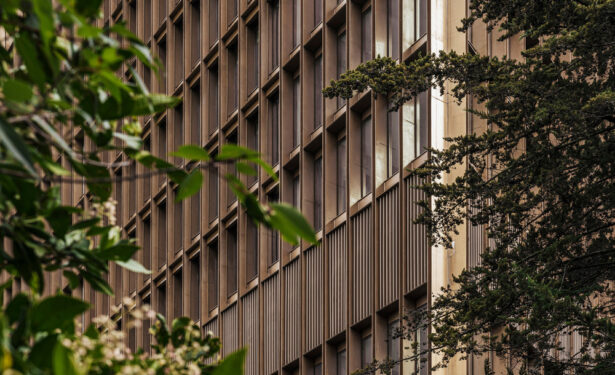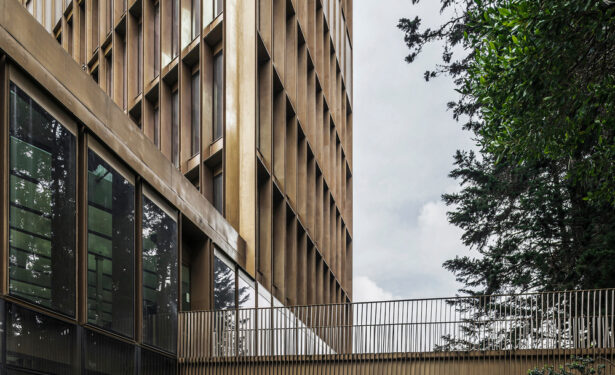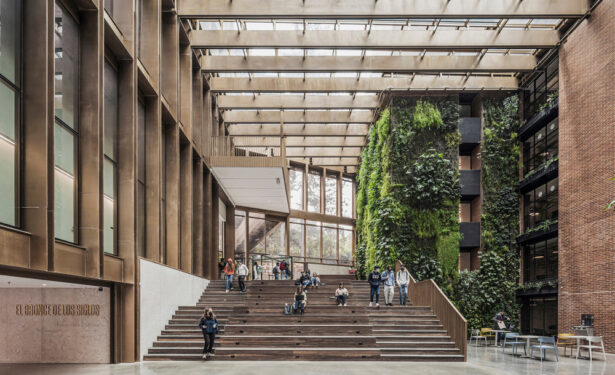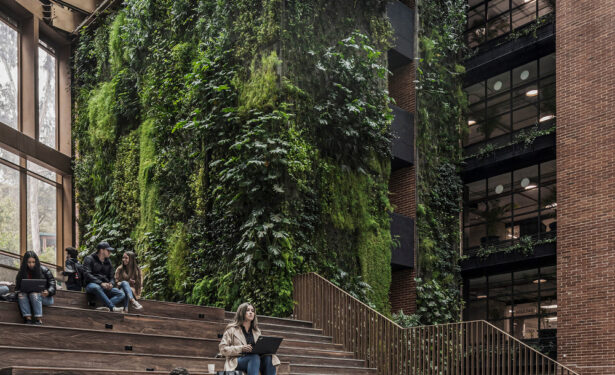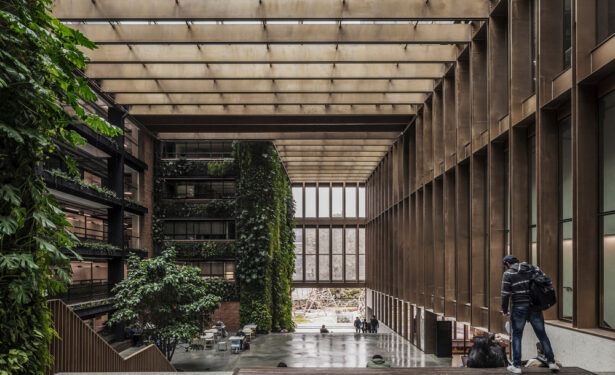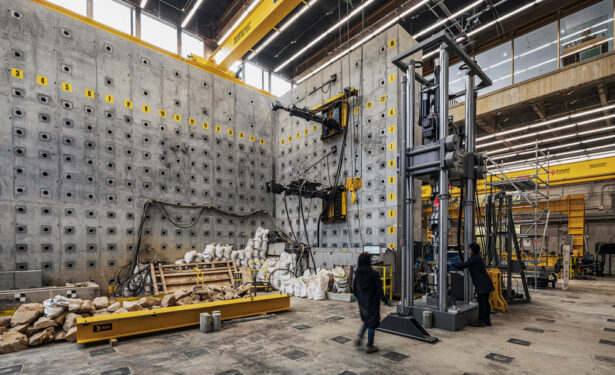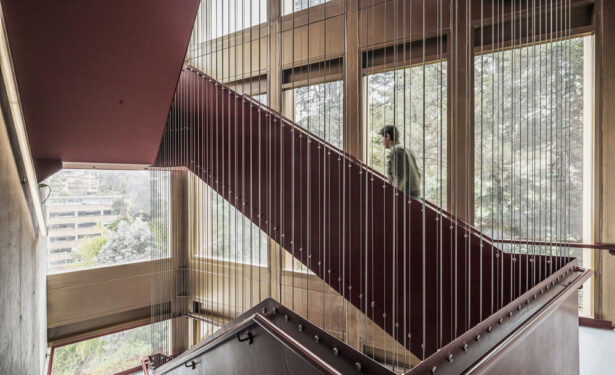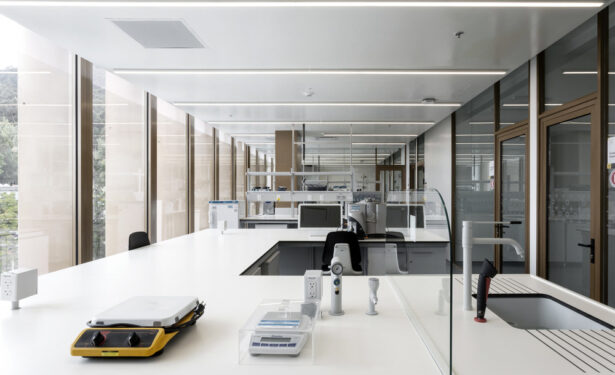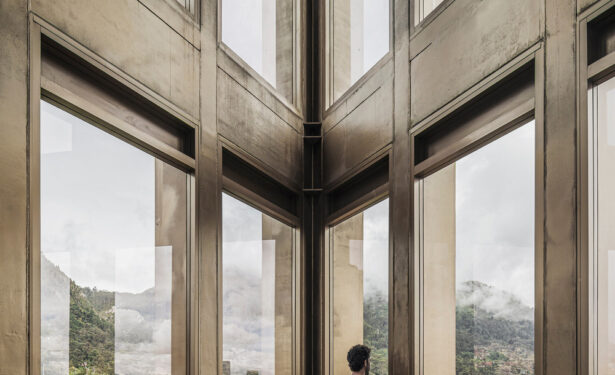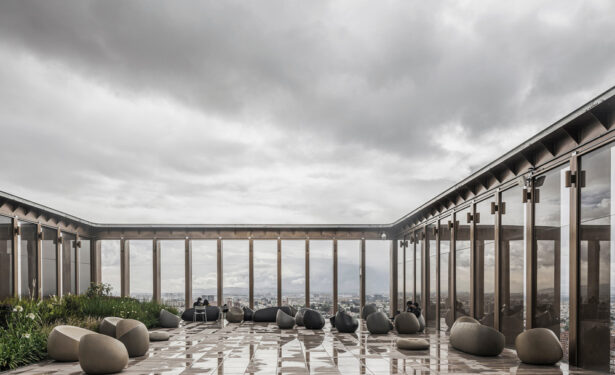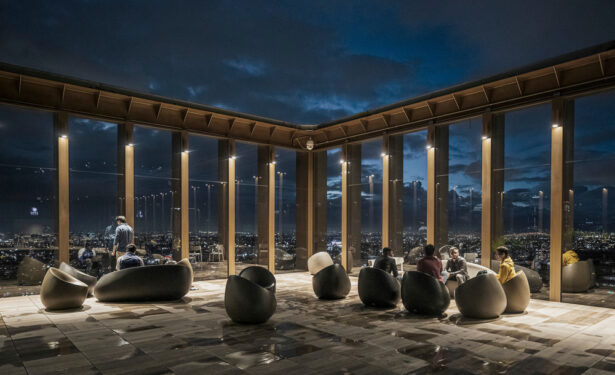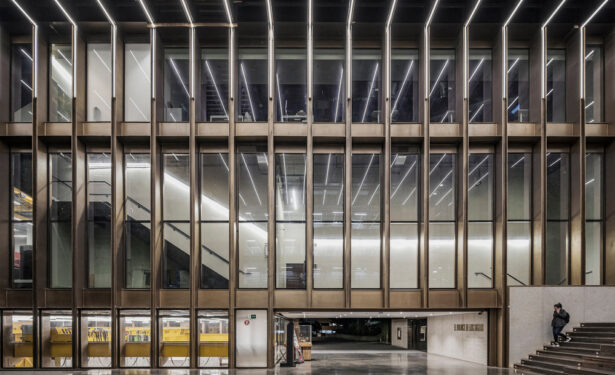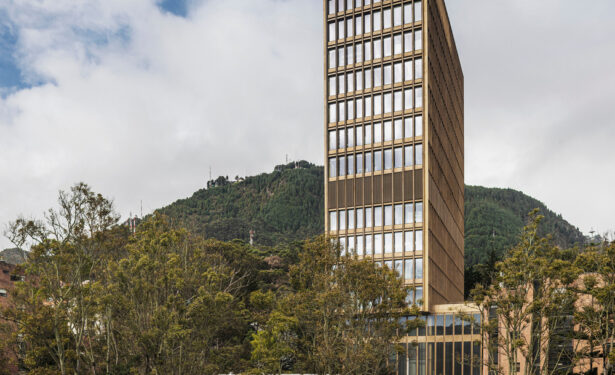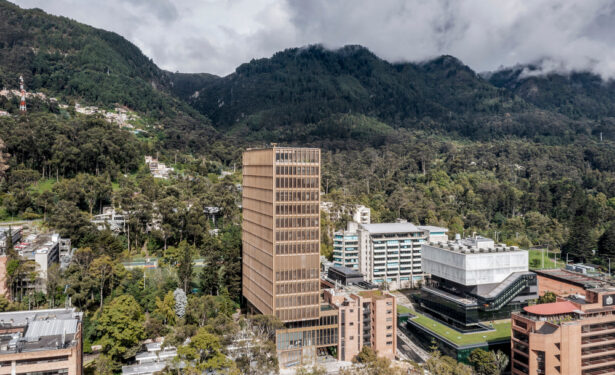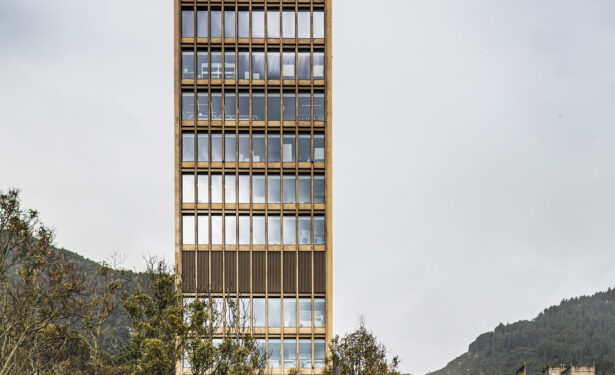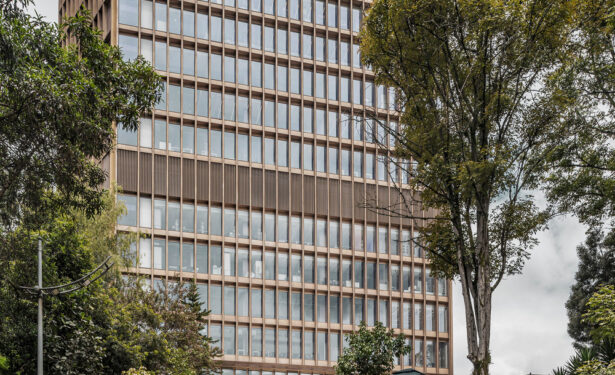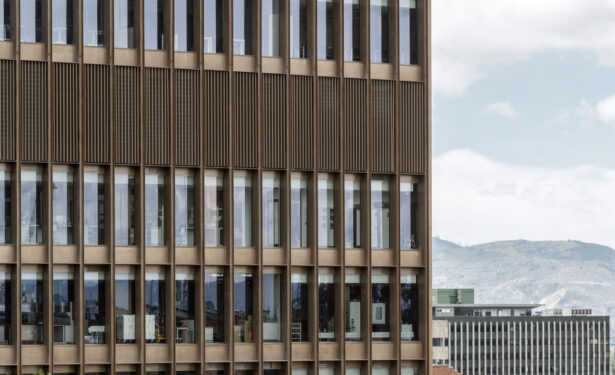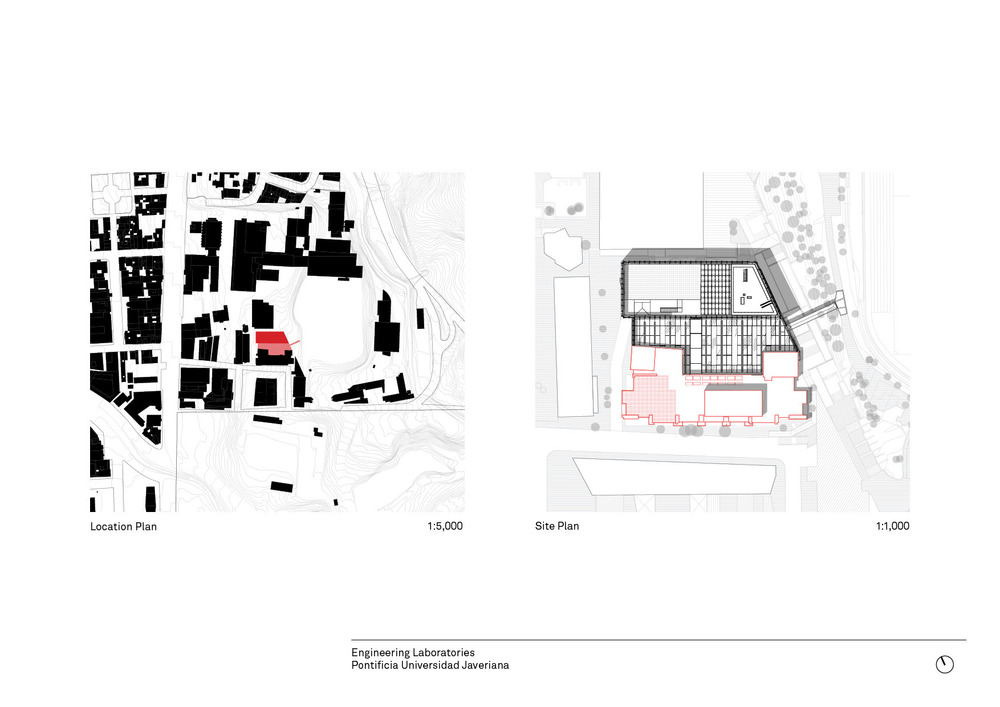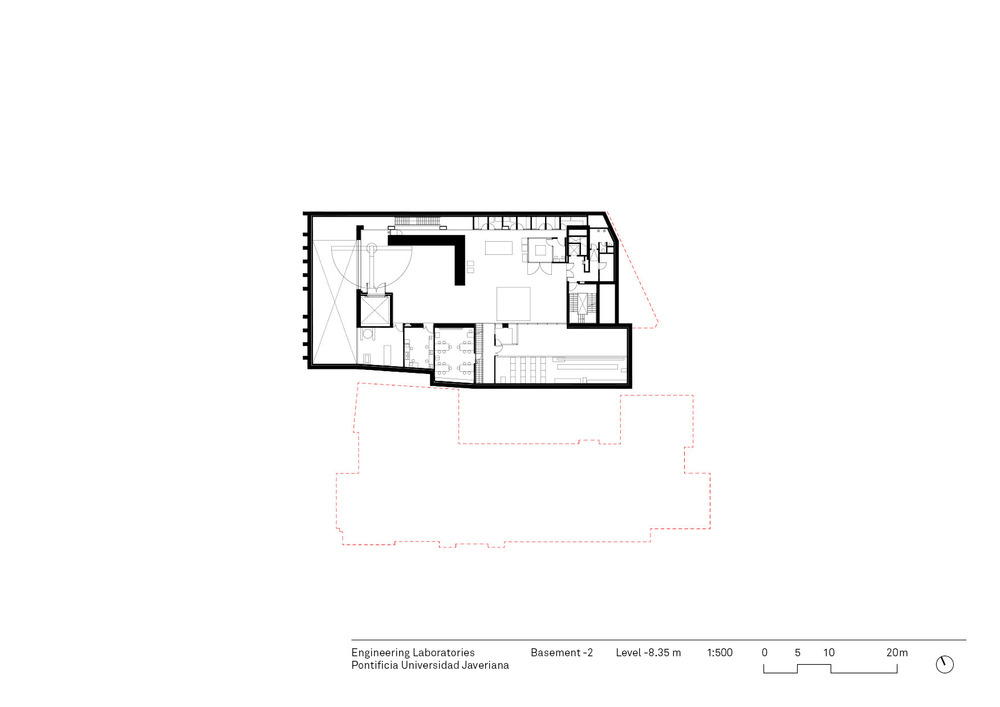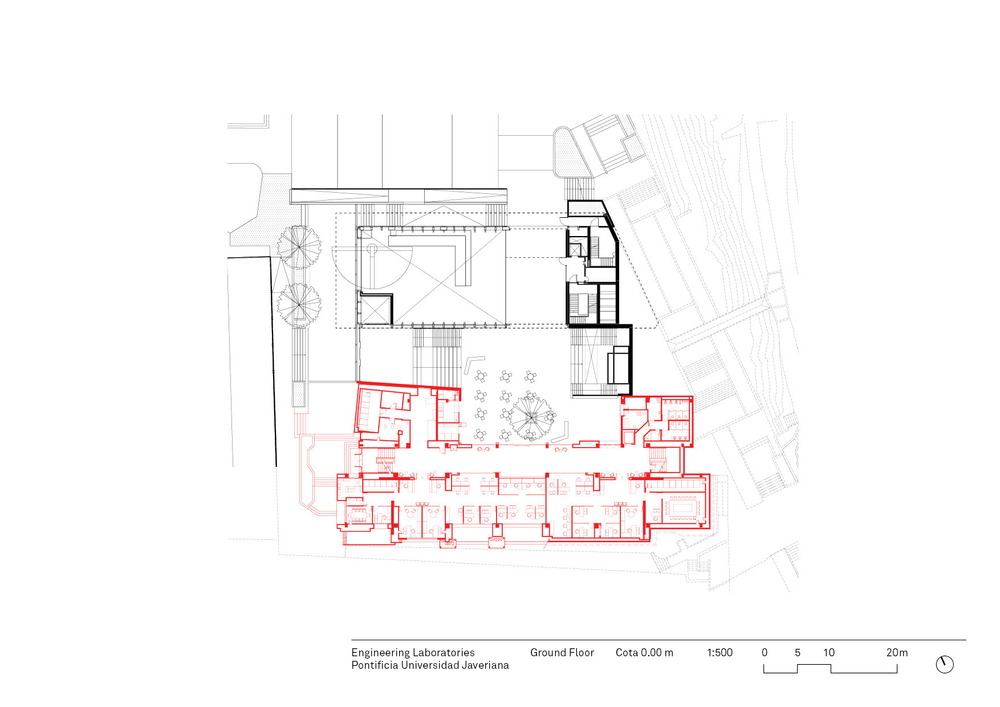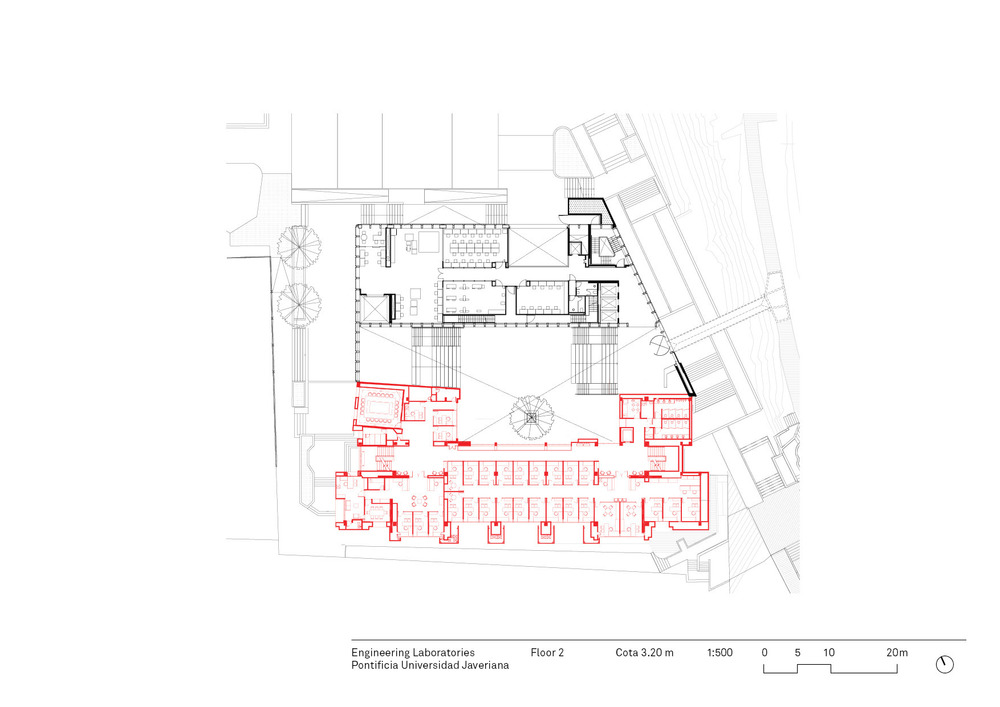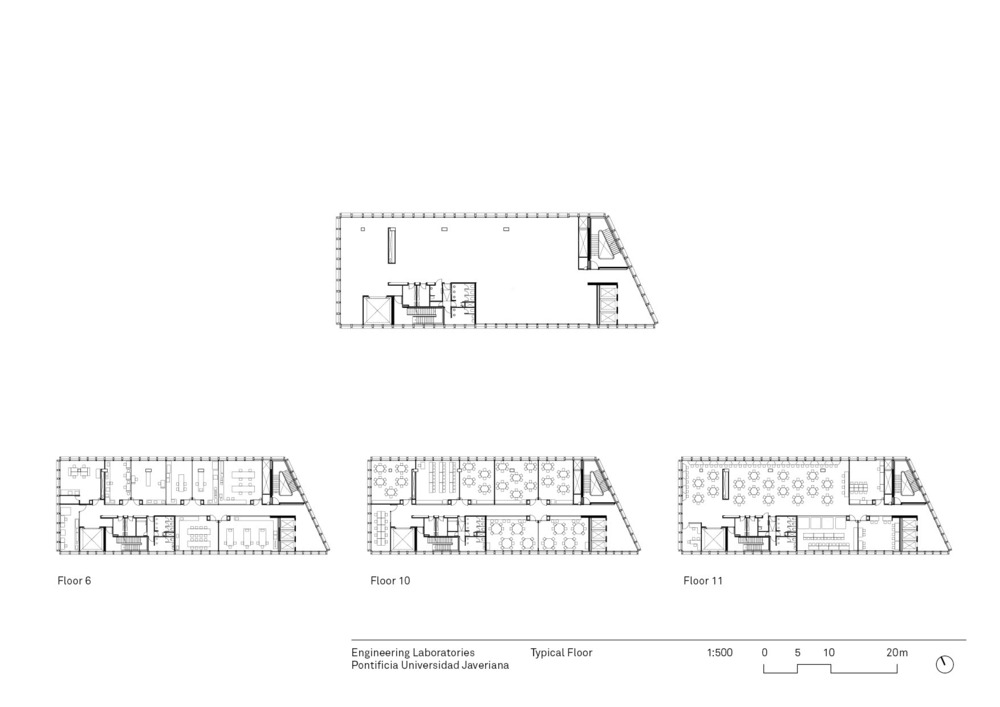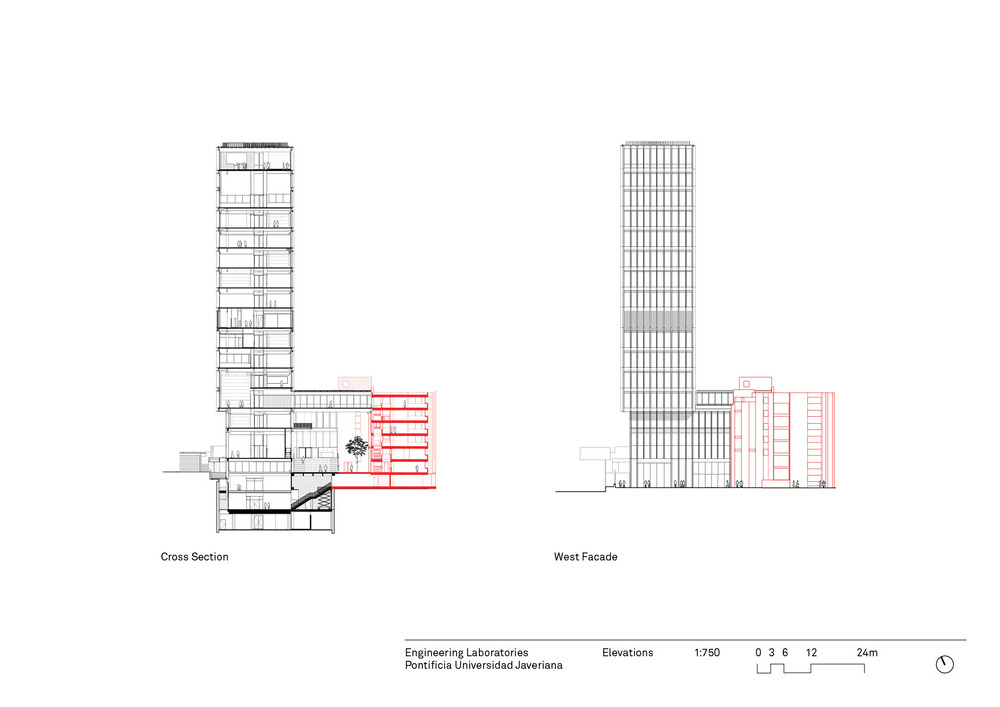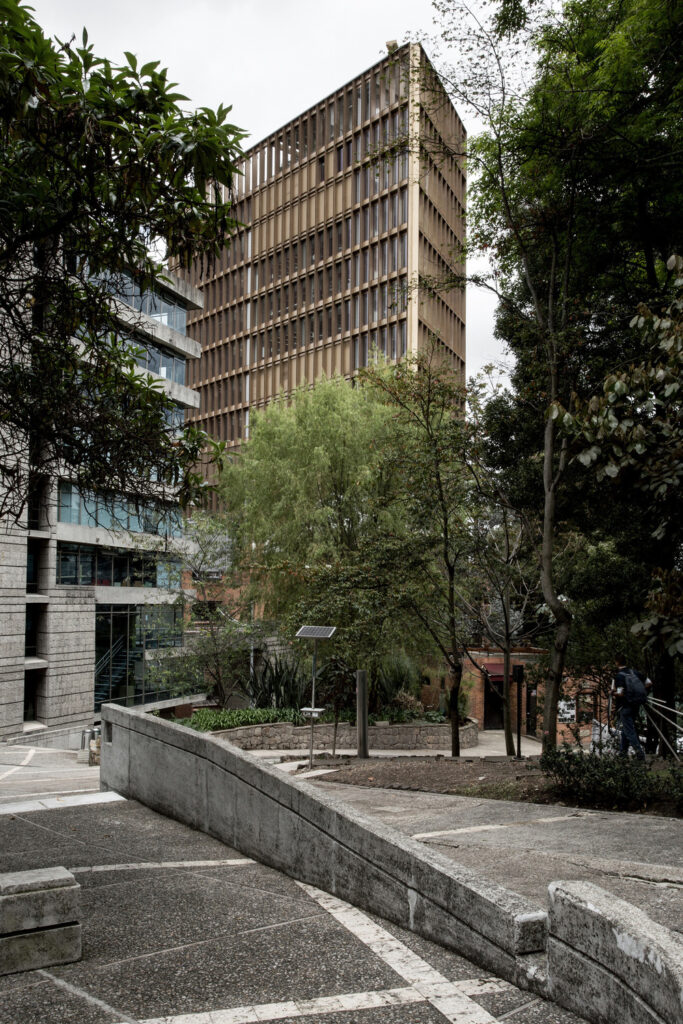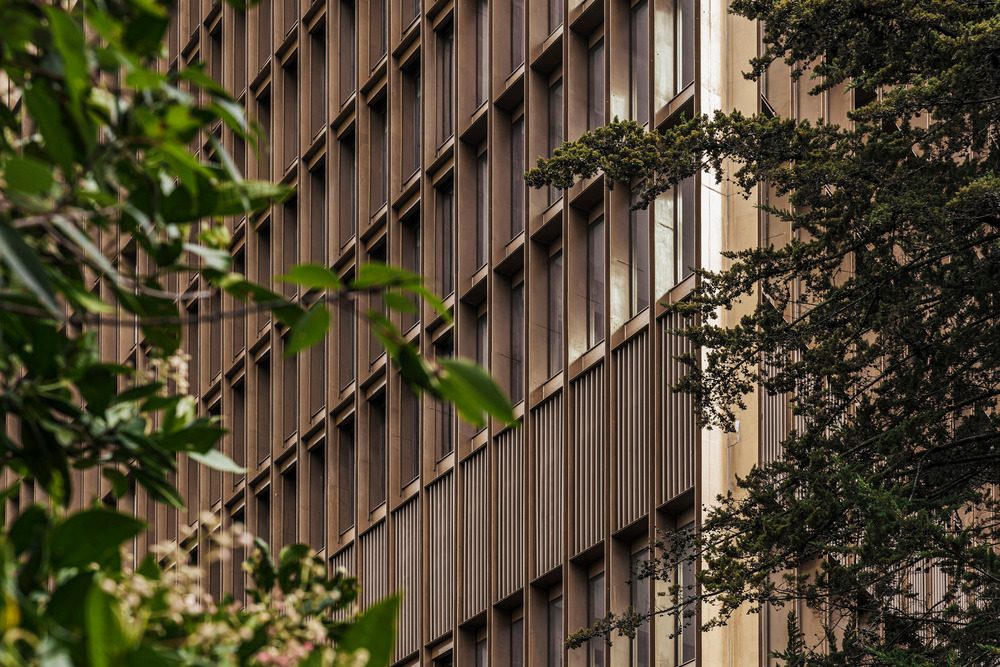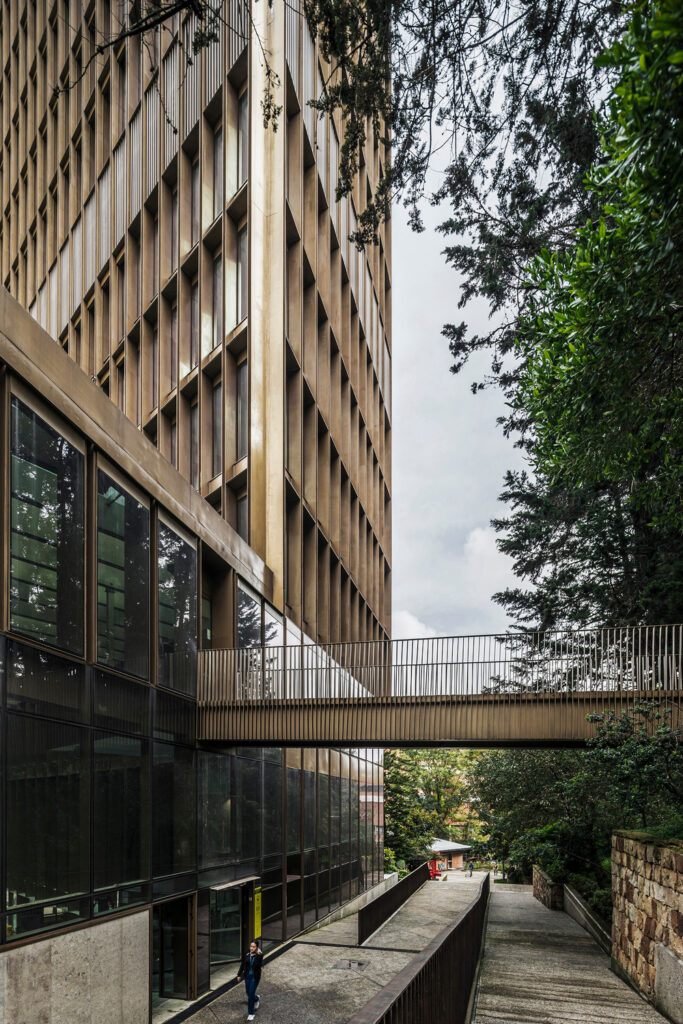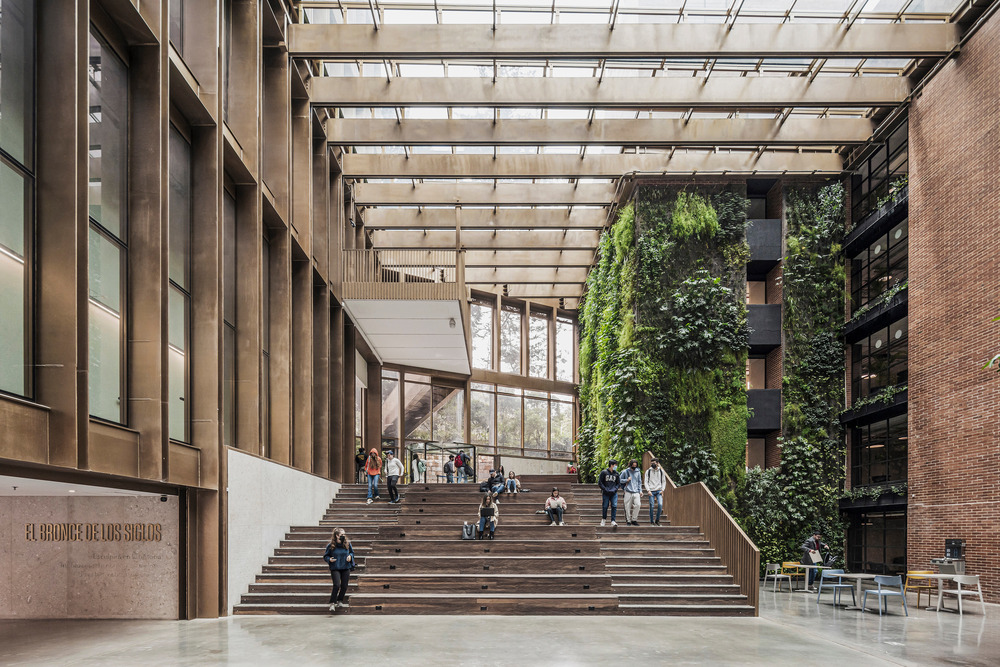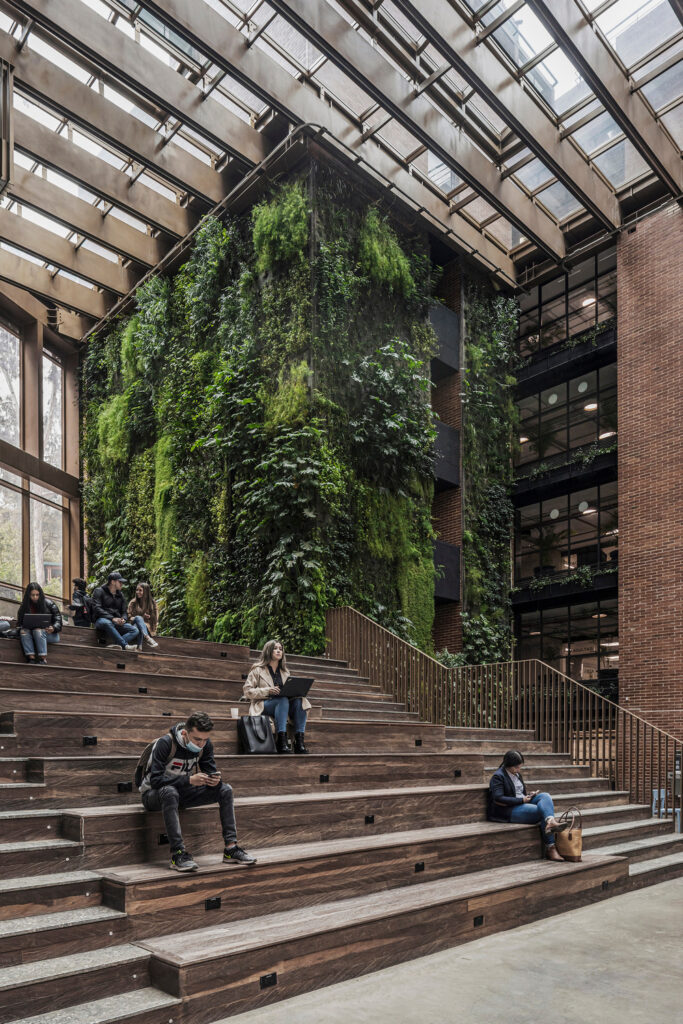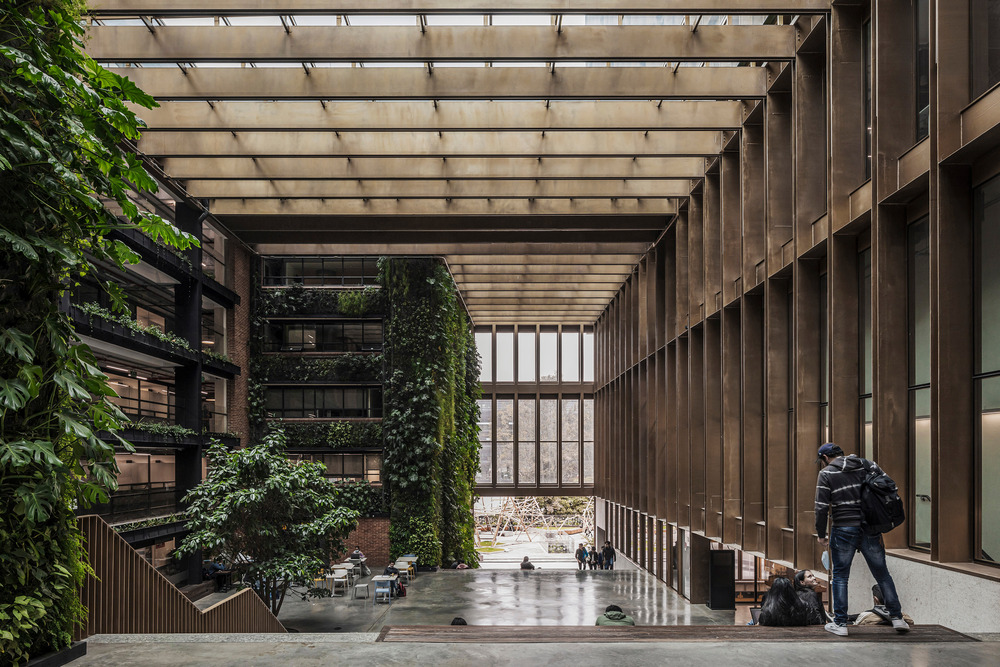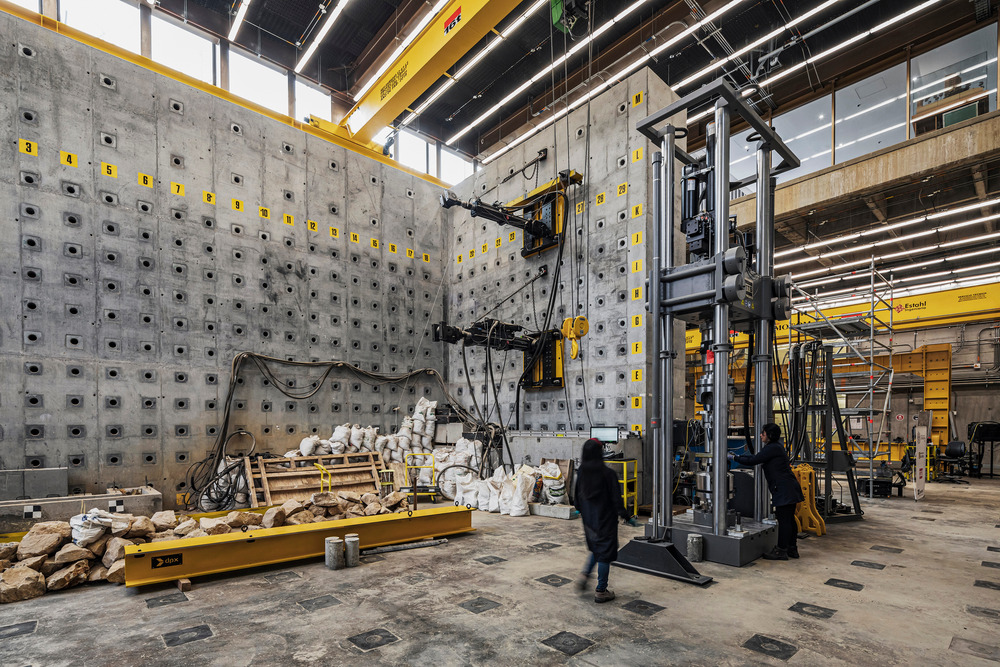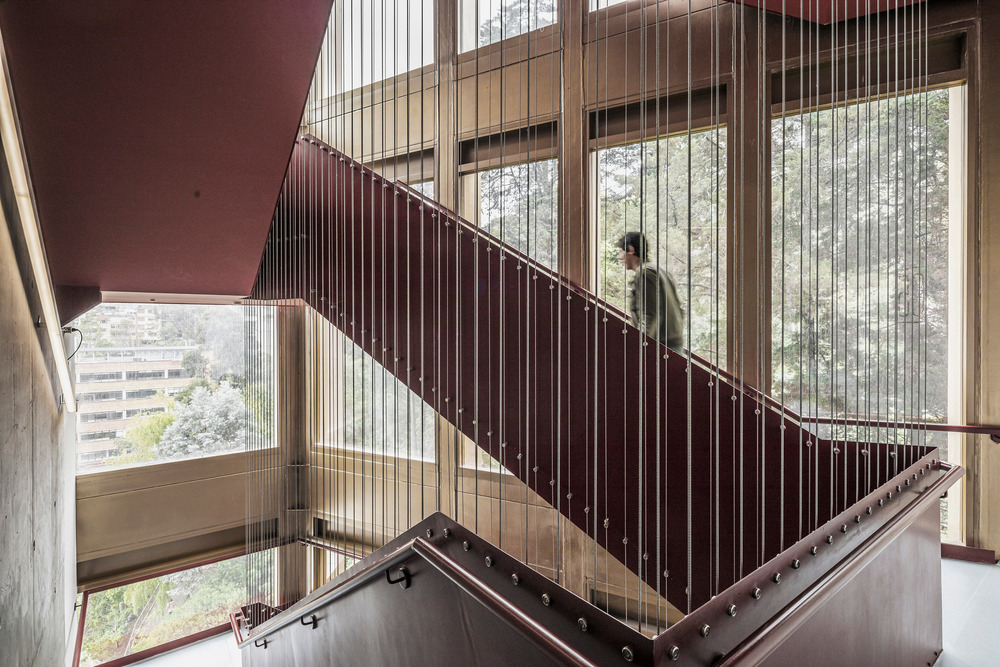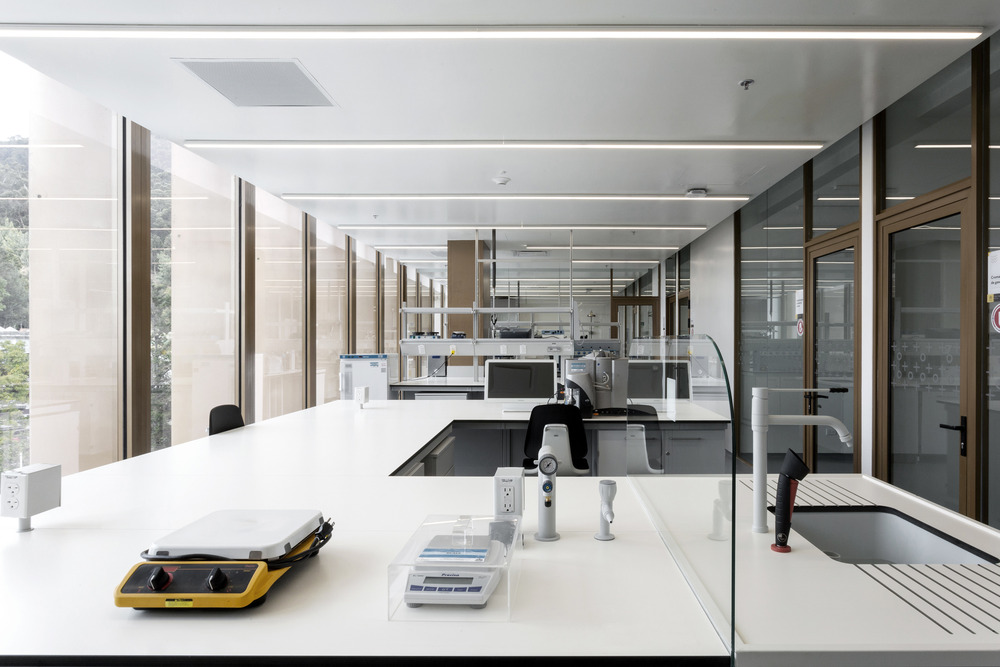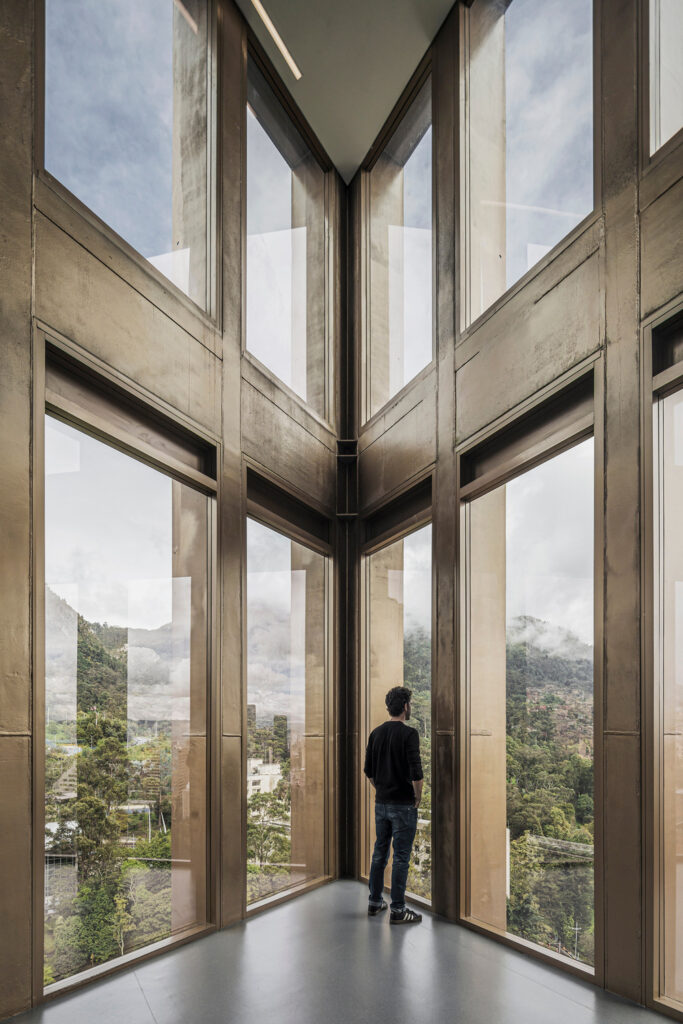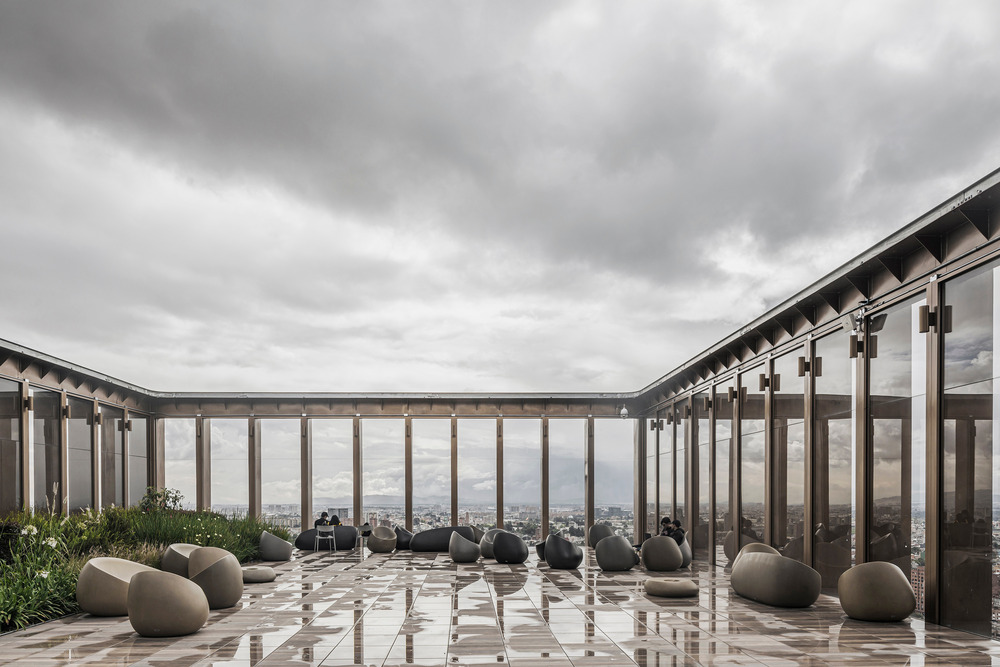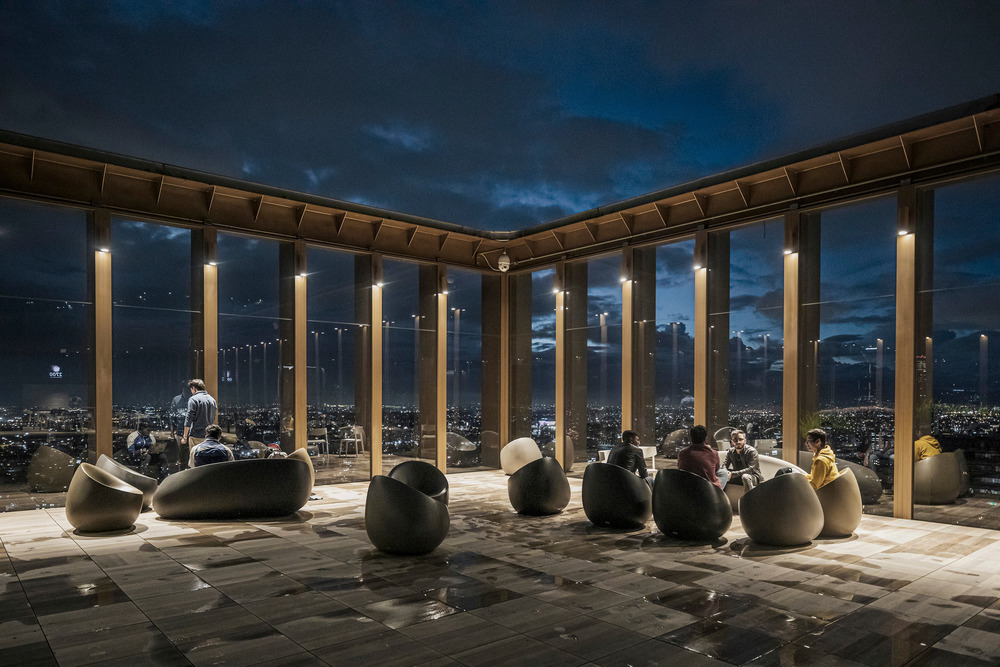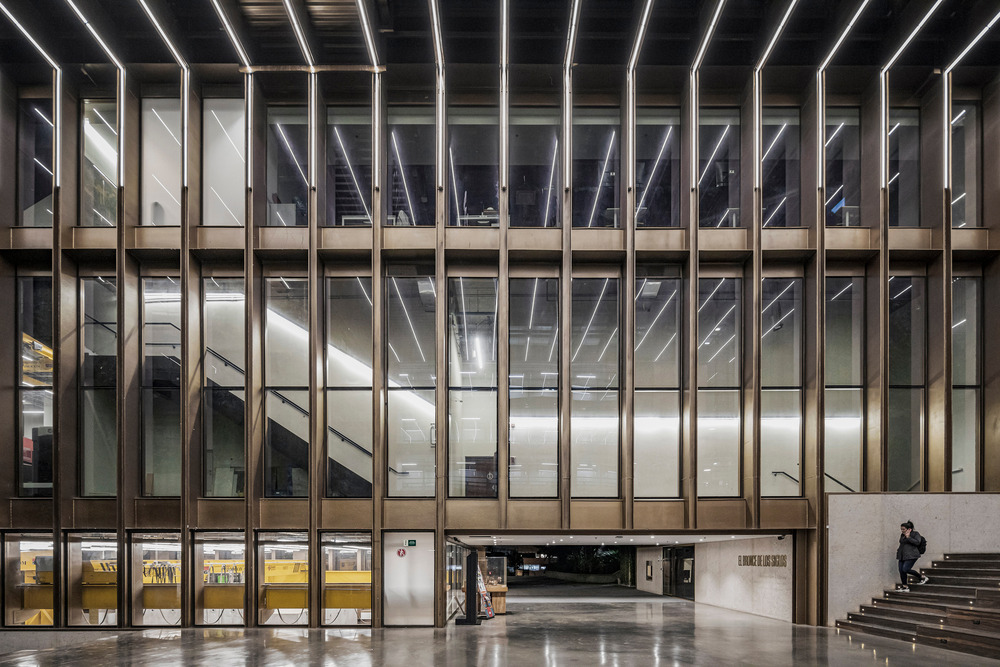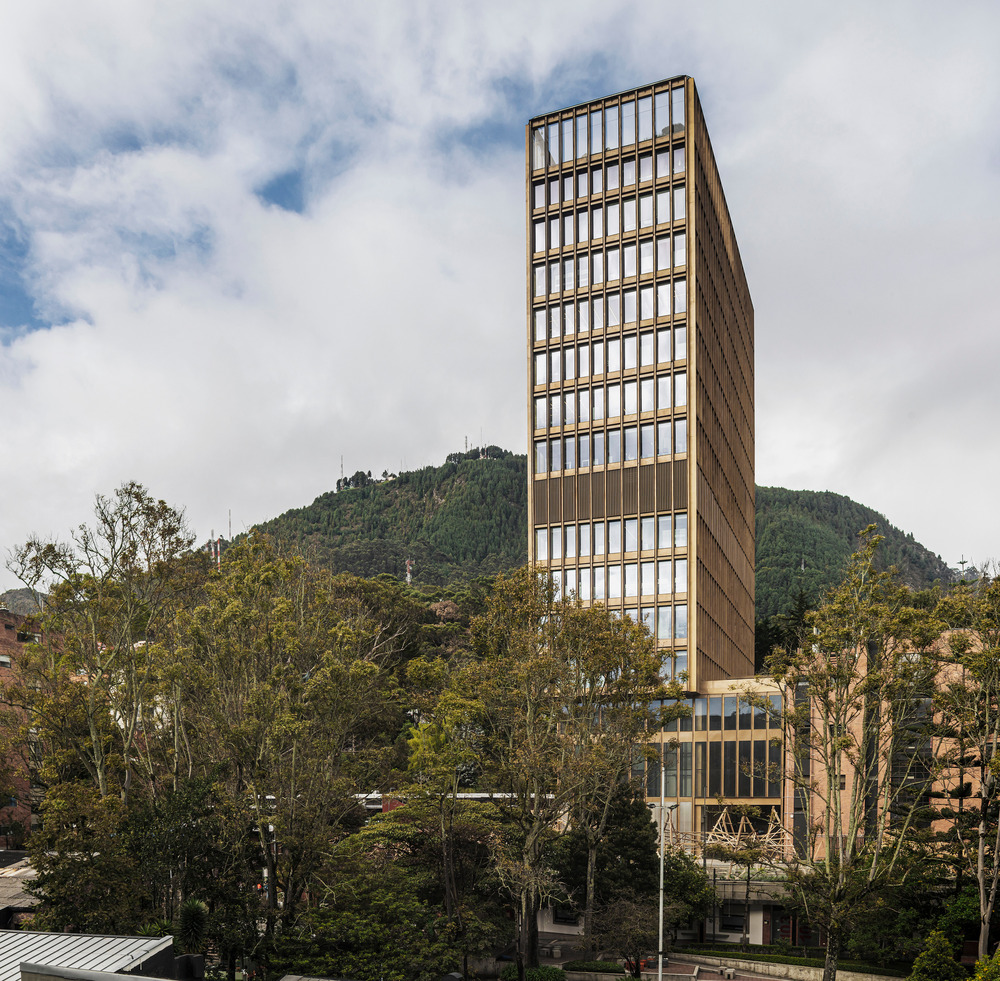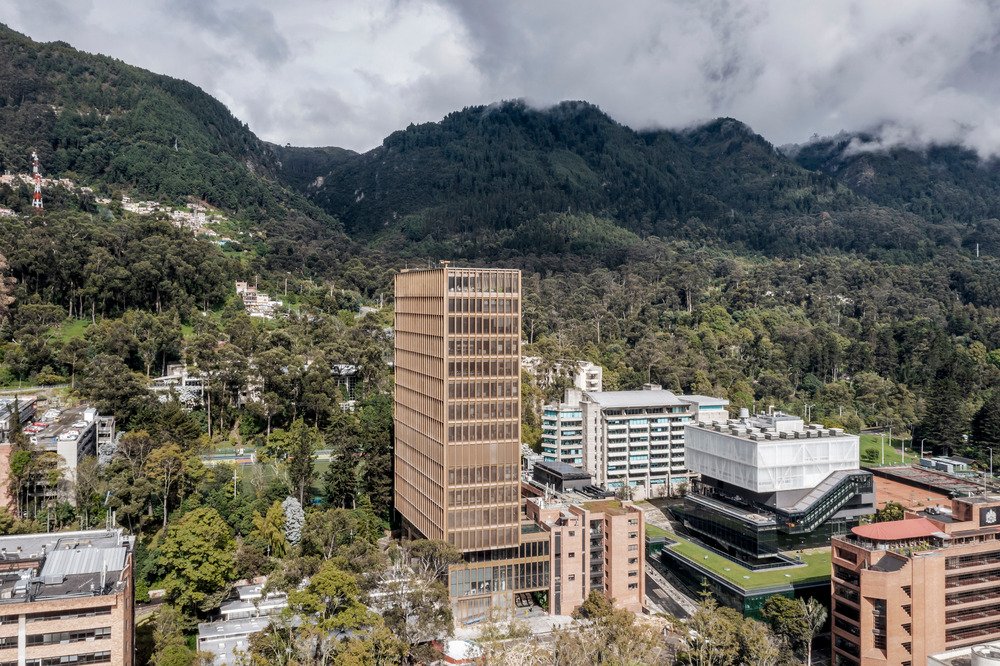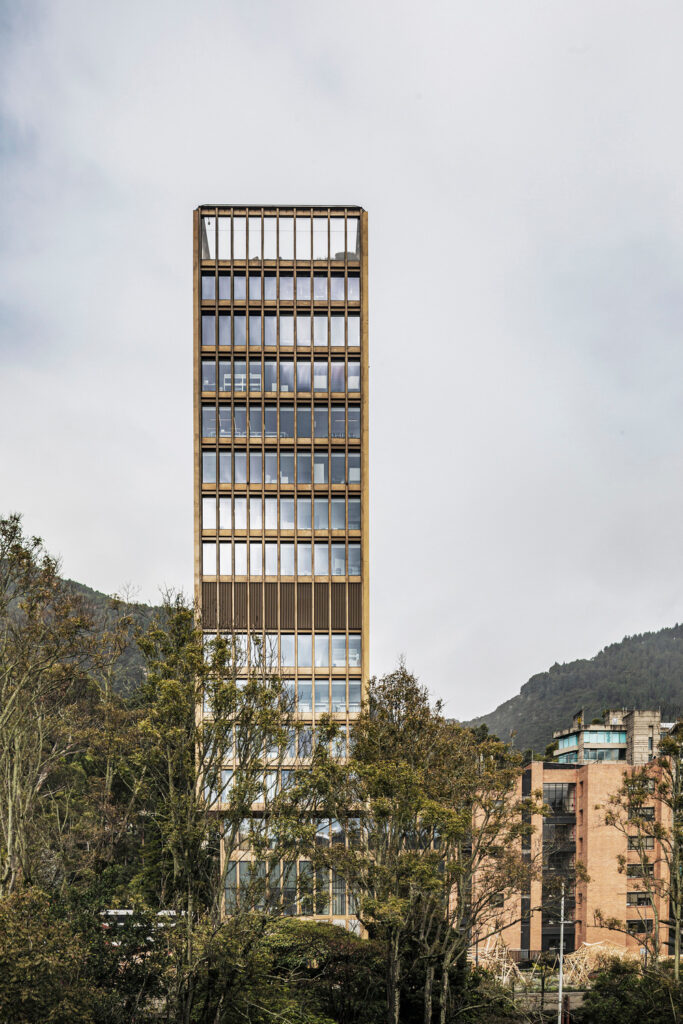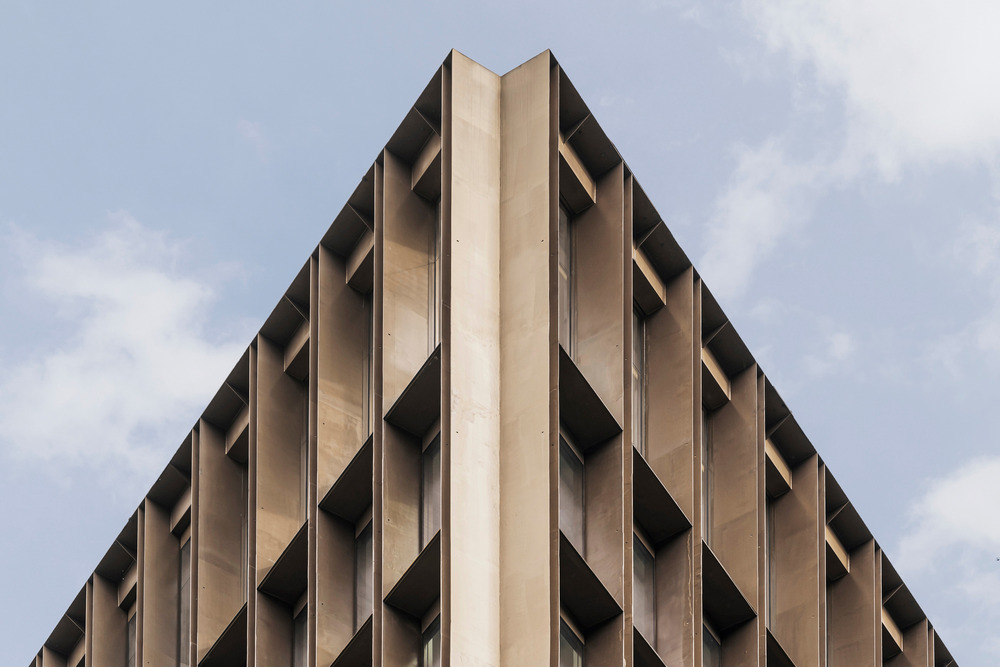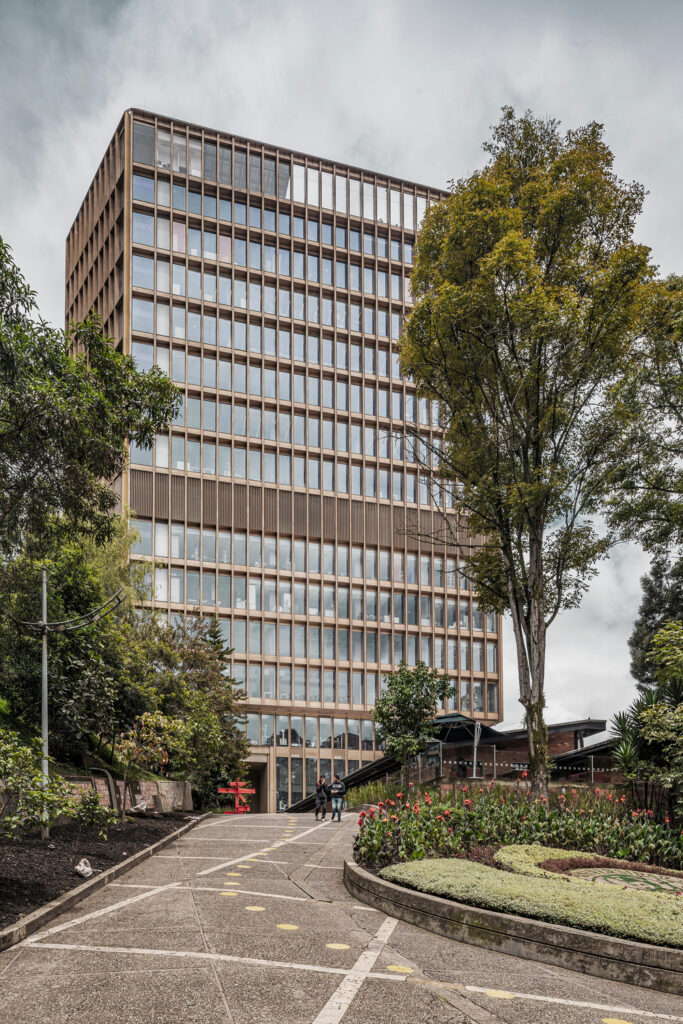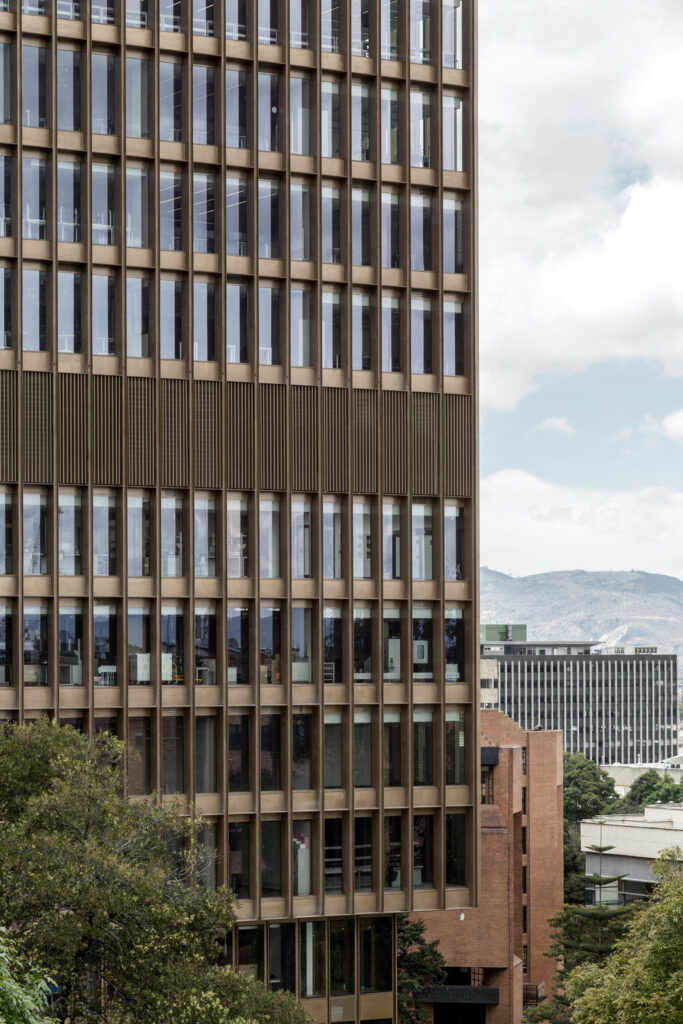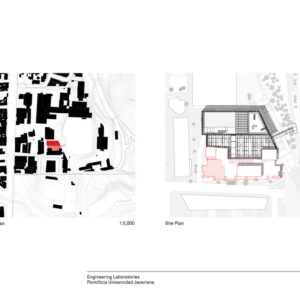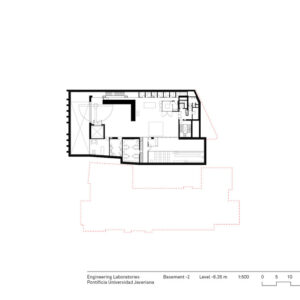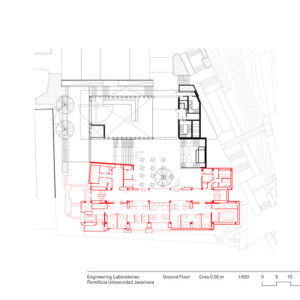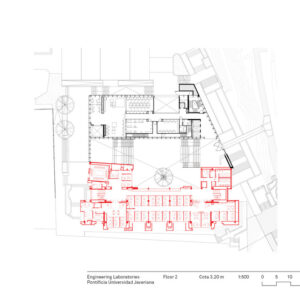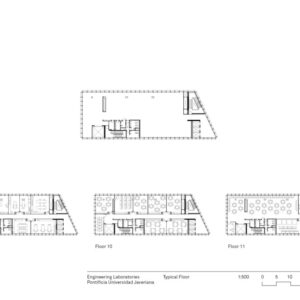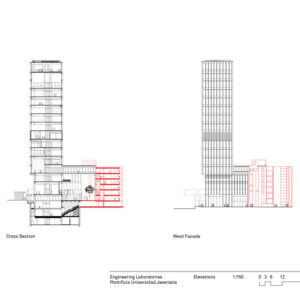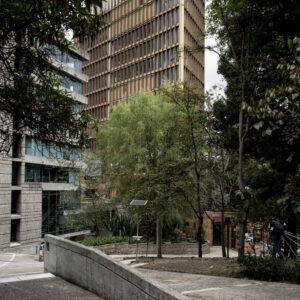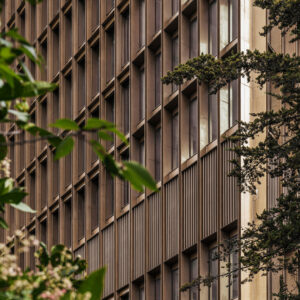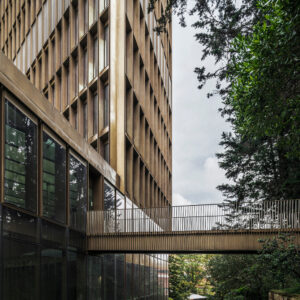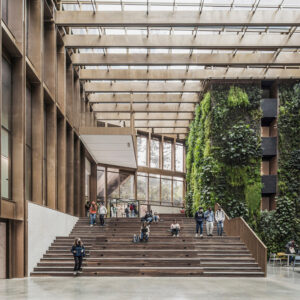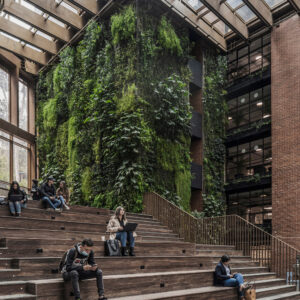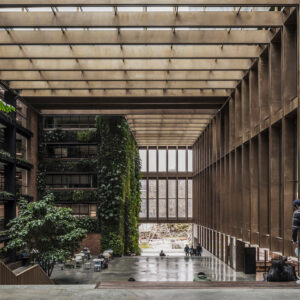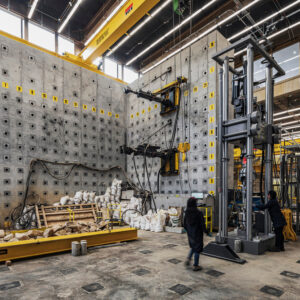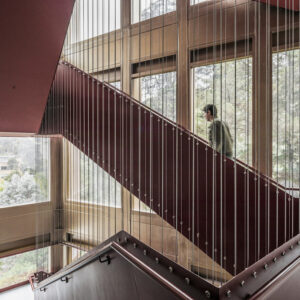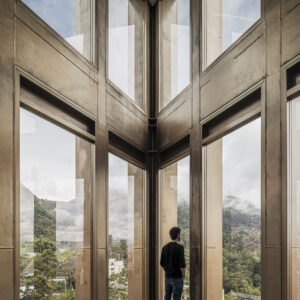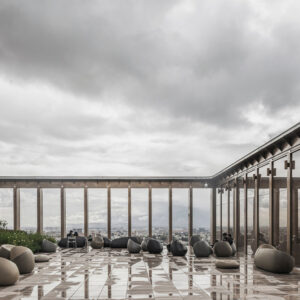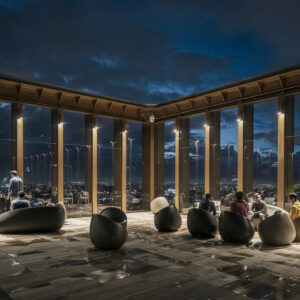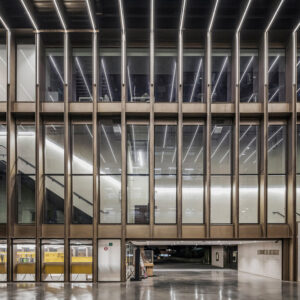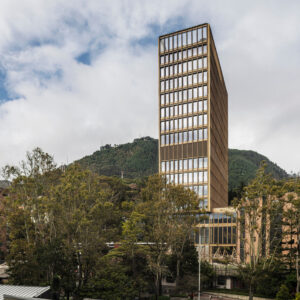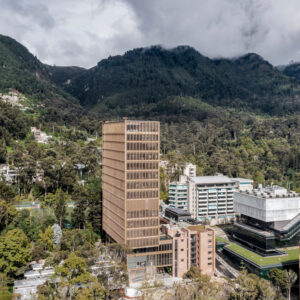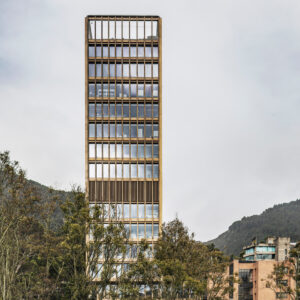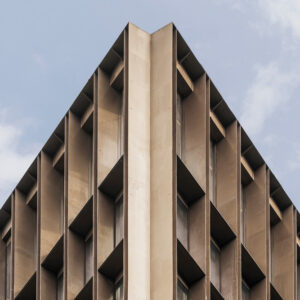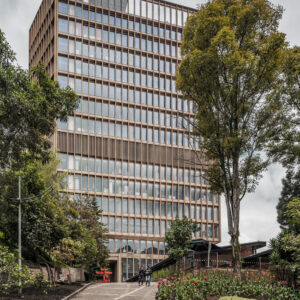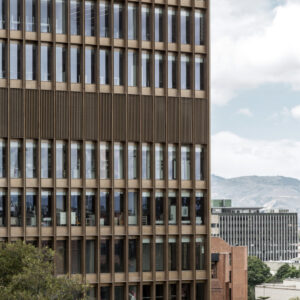
- 30 January 2024
- 139 defa okundu.
Engineering Laboratories Tower | Pontificia Universidad Javeriana
Juan Pablo Ortiz + TALLER Architects present their collaborative work completed for the Engineering Faculty at Pontificia Universidad Javeriana in Bogotá, Colombia.
Institutional Architecture, Institutional
The mandate followed a private competition held in 2014 seeking a complex that seamlessly integrates an existing brick structure with a new steel tower. At an altitude of 2,600 meters in the foothills of the Andes, the building showcases exceptional sustainability and technical feats.
For the university, it was imperative to retrofit the 7,294 m2 existing brick building to reduce embodied carbon, conserve resources and energy, and extend the lifespan of the original structure. The retrofitting of the late 80s building was prioritized for logistical and ecological benefits over cultural or heritage features. This integration helped bring the building up to modern standards, enhanced its energy efficiency, and created faculty office spaces fostering collaboration and community building.
The site presented significant challenges; it was quite narrow, with a limited road entrance, leading construction to favor prefabrication and on-site assembly over extensive formwork and material logistics.
A notable feature of the complex is The Atrium, a communal space bridging the old and new structures and connecting with the campus’ pedestrian network at different levels. This vestibular space provides access and meeting areas for the Engineering Faculty, transforming the inner brick façade into vertical gardens that offer acoustic absorption, thermal regulation, and visual appeal.
The 14,089 m2 steel addition, constructed over 15 levels and 3 basements, rises 74 meters above the campus. It accommodates 94 laboratories for research and learning, 15 exclusive teaching spaces, and 700m2 of informal learning spaces for students. Most laboratories are transparent, fostering engagement and interaction between different research fields and disciplines. The infrastructure serves the four departments constituting the faculty: Civil, Electronic, Industrial, and Systems Engineering, as well as upcoming future programs.
The building design draws inspiration from two steel-associated construction types: the open-plan nave and the tower with a structural façade. The Atrium embodies the former, while the tower follows the guidelines of the structural tube steel frame, where façade and structure are one and the same.
The building envelope features inner curtain walls with laminated low-e glazing, reducing energy loads while optimizing views of the surrounding geography and cityscape. A mid-height mechanical floor houses the central air distribution system, freeing up the roof for use as a communal terrace.
During excavations, 1,880 tons of half-inch thick structural steel sheets were processed and prefabricated in a controlled environment. The structural steel tube frame was consolidated by 81 bespoke hollow-section columns joined with 100% continuous weld seams throughout the entire brass-colored façade.
The design not only meets technical challenges, but also represents a step towards shaping the future of the faculty and the country. In the short time since its official opening, it has inspired research and collaborations in engineering, not just locally but also regionally.
Etiketler

